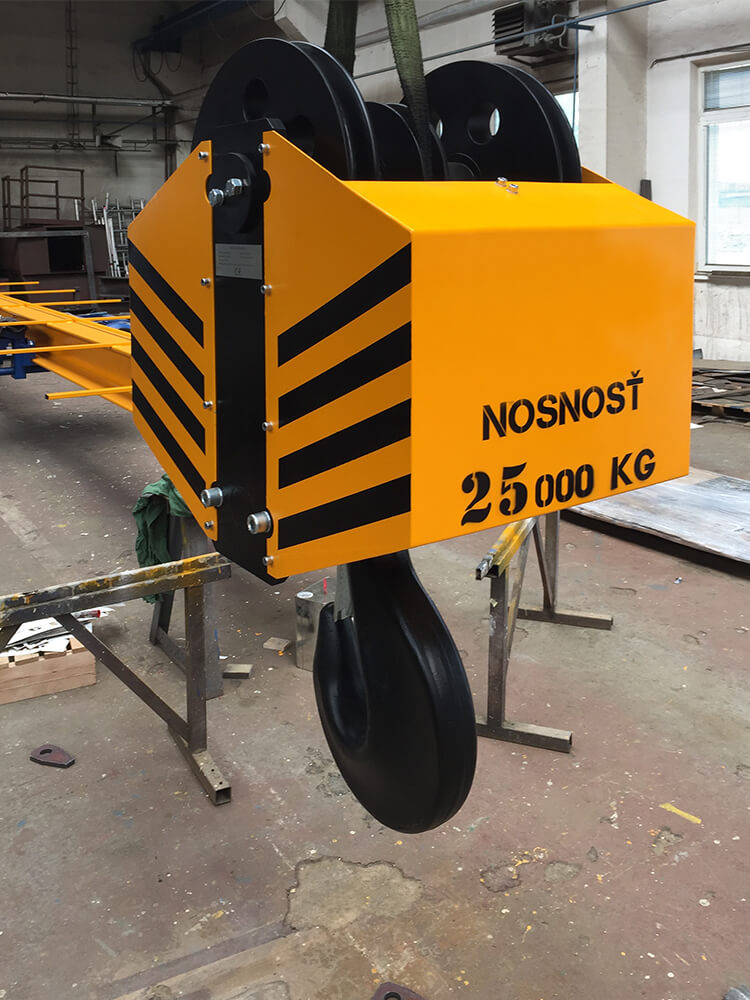
Load-bearing capacity 25 t
The structure of a rotary block is basically the same as standard block structures. The hook is placed on a cross beam in an axial barrel roller bearing so as to be able to rotate. It is fastened with a nut and locked against self-loosening. The cross beam is placed in the lower part of the two side pieces. In the upper part of the side pieces, there is a pin on which cable pulleys are placed. The cross beam is attached to the side pieces using pins and locked with bolts. The pin is mounted using two circular plates. The axial bearing of the hook is lubricated through a lubrication hole in the lower part of the cross beam and through a screwed-in nipple.
The hook can rotate thanks to an electric gearbox with toothed gearing. The pinion of the gearing is mounted to the end shaft of the gearbox and the gear is attached to the hook nut. The gearbox is placed on a separate frame attached to the side pieces of the block with bolts. The gearbox is equipped with a slipper clutch and a break with manual release by the lever in the motor casing.
The whole rotation mechanism, the lower parts of the cable pulleys included, is covered with a two-part casing attached to the block side pieces. The casing on the motor side has a door through which one can access the break release lever. Between the lower edge of the pulleys and the upper part of the gear box, there is a partition wall installed.
Electric voltage is supplied to the block via the crane crab cable. The cable is attached to the block structure using a holder screwed to the cross beam. The rotation of the block hook is controlled by the crane operator from the crane cabin.